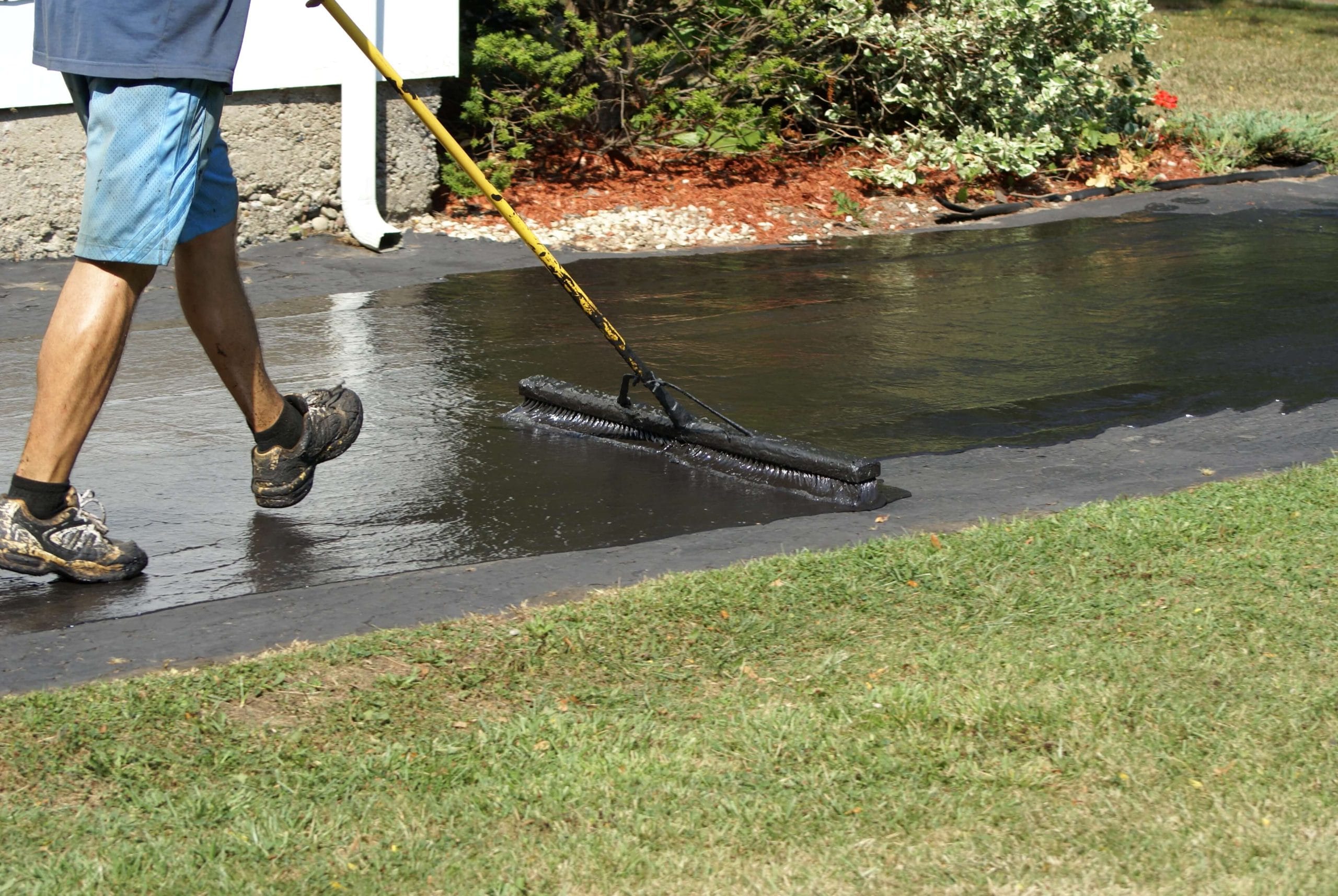Many roads, driveways, and parking lots across the US are paved with asphalt. Asphalt has been a popular paving option for decades because it’s easy to install, affordable, and can last for several years. Asphalt is strong and lasts most multiple decades, but there is a surprising enemy out there to the useful life of your asphalt – standing water.
Your heart may not skip a beat when you find a puddle or clogged drain in your lot and while a puddle overnight won’t wreck your lot – they can be a sign of bigger problems to come. Something needs to be done when you find water on your blacktop.
What You Should Do About Standing Water in a Driveway
Let’s learn why standing water is your driveway’s enemy and could be a bigger concern than you first thought, how to find the cause of standing water, and what you can do about it.
What’s the Big Deal About a Few Puddles?
By its very nature asphalt is waterproof. Asphalt’s natural waterproofing properties make it useful for several applications including roofing, plumbing, and of course paving. Asphalt retains this waterproofing ability for most of its useful life, but the sun’s radiation and other elements can slowly wear down the chemical bonds that keep asphalt waterproof allowing moisture to penetrate.
A few minor water infiltrations aren’t a big deal at first, but any water penetration will only get worse with time. If moisture gets underneath your asphalt and freezes and thaws, it could wrestle entire portions of your lot from where they should be. Standing water has plenty of time to infiltrate your paving material and must be dealt with quickly to prevent further (and more expensive) damage.
Causes of Standing Water
There are three primary causes of standing water:
- Bad Drainage: One of the more common causes of standing or pooling water in your lot. All moisture should be drained off the lot efficiently so if you have water pooling – you have a problem. You will need Enright Companies to assist you in creating proper slopes and channels, so water drains away and doesn’t cause damage to your lot.
- Damage: Damaged areas like ruts, cracks, and potholes will naturally collect water which can make these spots of damage worse. When the damage is dry, have it cleaned and patched to keep it from collecting water in the future. Standing water from damage to asphalt can also be a hazard to pedestrians and vehicles.
- Bad Installation: Though rare, a bad installation can cause you standing water headaches. Improper compaction or poor grading can keep water stagnant when it should be draining away or can cause small depressions that turn into impromptu bird baths. Poor installation should be addressed by a paving professional.
Taking Care of Causes
Once you know the root of standing water, you can take care of it. This might include regrading a lot or adding new drainage, patching any potholes or divots that want to collect water, or even having a lot resurfaced. Your best ally in keeping standing water away is a reputable asphalt contractor that can identify problem areas and keep them from causing issues.
A small puddle may not be an apparent sign of danger, but it’s hazardous to both your asphalt and those driving and walking on it. To properly fix standing water on your lot first identify the issue and fix the cause so it won’t bother you again. We can help you fix these issues to keep your safe and dry.


